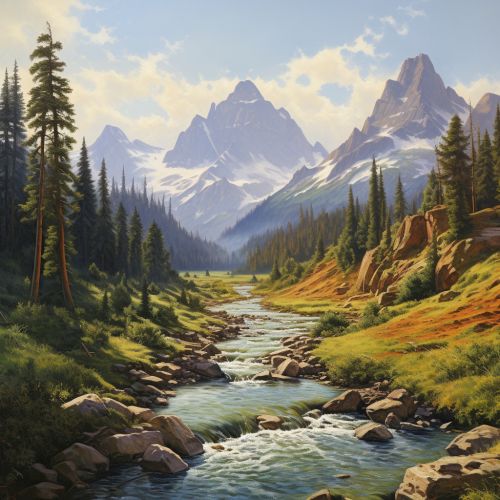Geography of North America
Physical Geography
North America, the third largest continent on Earth, is located in the Western Hemisphere and primarily within the Northern Hemisphere. It is bordered by the Arctic Ocean to the north, the Atlantic Ocean to the east, the Caribbean Sea to the south, and the Pacific Ocean to the west. North America covers an area of about 24,709,000 square kilometers, which is approximately 16.5% of the earth's land area, or about 4.8% of its total surface.


Geology
The geological history of North America is a complex narrative spanning billions of years. The continent's geology can be divided into several regions based on tectonic structure, including the Canadian Shield, the stable craton at the center of the continent, and the various orogenic belts surrounding it, such as the Appalachian Mountains in the east and the Rocky Mountains in the west.
Climate
North America's climate is as diverse as its geography. The continent spans a wide range of latitudes, leading to a variety of climate zones. These include the arctic tundra of northern Canada and Alaska, the temperate rainforests of the Pacific Northwest, the arid deserts of the southwestern United States and northern Mexico, the humid subtropical climates of the southeastern United States and much of Mexico, and the tropical climates of the Caribbean and southernmost Mexico.
Flora and Fauna
North America is home to a rich diversity of flora and fauna, with numerous endemic species. The continent's varied climates and habitats support a wide range of ecosystems, from the boreal forests of Canada and Alaska, to the grasslands of the Great Plains, the deserts of the Southwest, and the tropical rainforests of Central America and the Caribbean.
Human Geography
Demographics
As of 2020, North America has a population of over 579 million people, making it the fourth most populous continent after Asia, Africa, and Europe. The most populous countries are the United States, Mexico, and Canada, which together account for more than 90% of the continent's population.
Languages
North America is linguistically diverse, with hundreds of indigenous languages and several colonial languages spoken across the continent. The most widely spoken languages are English, Spanish, and French, reflecting the historical influence of British, Spanish, and French colonialism.
Economy
North America is one of the world's wealthiest continents, with a high standard of living and a strong economy. The United States has the largest economy in the world, followed by Canada and Mexico. The economy is diverse, with key sectors including manufacturing, services, agriculture, and natural resources.
